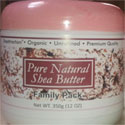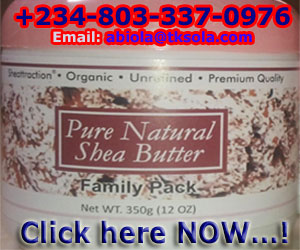2 nights ago, a Nigerian Farm CEO who I’d asked to call me, in response to his web contact form inquiry (about my Feed Formulation Handbook, Ration formulation Software and Practical Training), sent me a Whatsapp message:
He stated that the email offer I’d sent was being reviewed against the requirements of the farm business organisation he represented. Specifically, he asked that I provide details of how the solutions I offered would address the 3 requirements outlined below
1. Feed formulations for poultry, livestock & cattle
2. Where to find the materials locally
3. Identification of the raw materials, minerals & vitamins
=======
Sometimes I find it more convenient to give responses to such client inquiries as a voice note. What follows below is the text transcript version of the voice note I sent to him (Click here to request download link to the audio file). I share it here because I believe other Farm CEOs with similar needs may find it useful.
Right Shehu,
I just saw your response on Whatsapp. As I said to you in the message I sent, This is a due diligence follow-up. Now to address your queries, with regard to requirements you say you have:
- Feed Formulation for poultry, livestock, cattle
Basically when you say livestock, I know you refer to the other 2 categories, be it cattle, pigs – whatever.
Now the handbook I’ve been selling since 2002 was written with a view to educating people about the science of feed formulation – giving them a foundation in it.
You see if you don’t understand the science of feed formulation, then you cannot formulate feed intelligently/correctly.
This is because you need to understand what you are doing in order to arrive at intelligently compounding feed that animals are going to be fed to achieve the outcome you want as a farm business owner.
For instance if you’re raising poultry, you want them to deliver eggs to you – in the case of layers for example. And therefore you need to understand what the digestive needs of birds in that poultry category are.
And then know how to mix ingredients of different kinds, which have different nutrients in them, to arrive at that target outcome that you have in mind.
Now, I wrote that handbook in 2002, and I began selling it before I ever dreamt of selling it on the web. It was however people who were reading it that made me add a new product (the software) to complement the handbook.
You see they understood the technique of calculation described in it. It’s an improved version of the basic Pearson Square Computation technique. And that improved technique allows you to use more than 2 ingredients at a time in ration formulation computations – unlike what is the case with the standard Pearson Square technique.
Indeed you can have multiple protein sources for instance – maybe you have plant protein sources like Soyabean and animal protein sources like Fish Meal, and maybe blood meal (but we may not wish to introduce the headache of dealing with potential problems of high microbial content/storage or shelf-life challenges associated with use of blood meal).
Now you may wish to use those kinds of ingredients along with groundnut cake, along with any other protein source, even the Chromolaena Odorata (aka Siam Weed), which I recently published a 2 Part Audio Podcast Training Series on.
Whatever ingredients you choose to use, you can handle multiple protein sources using this improved version of the Pearson Square Computation technique. That’s what I’m trying to say here i.e. it the technique based on which my handbook teaches feed formulation – and the accompanying Excel-VB Ration Formulation software works based on the same model as well.
So the idea is that you need to understand the science of feed formulation. How to account for anti-nutritional factors and how they interact with one another – with respect, for instance, to the impact they might have on the formation/utilization of certain amino-acids.
Now based on all of that, a person who is going to do the ration formulation calculation needs to understand the science – based on the interactions, chemically, between these different compositions of feed ingredients you are going to use.
So whether it’s for poultry or cattle, it really does not matter which ones if you have the needed understanding.
For instance, Cattle are ruminants, as are goats.
So you must understand the way the digestive systems of these different animal groups work. And then you understand the interaction between the nutrients in the different feed ingredients you are going to use, then you can formulate feeds successfully for your animals.
This is because whenever you are making changes in your calculations you will know the potential implications, and that will guide you.
So my point is therefore that you need to have feed formulation done based on a sound understanding of the science of feed formulation.
My Feed Formulation Handbook enables you to understand that. It’s meant to teach you the theory of the science of feed formulation as well as the practice in terms of compounding.
Of course there is a practical dimension to it, which is why we have the practical one-on-one training I offer. But that’s also why I created the video tutorials – in addition to the FREE consultation they have once they become members of my Farm Business Ideas club.
So, it’s up to you to decide if you want to sign up with me, because what I’ve described above is the foundation on which my Feed Formulation Solutions are offered.
There’s a handbook, and the handbook is complemented with a (ration formulation) software. It was the first group of handbook buyers, who requested that I give them an automated means to do the ration formulation, so that they could quickly and easily derive rations for different animals. That’s what led me to build the Excel-VB driven Ration Formulator in 2004, 2 years after I began selling the handbook.
So the version of the Ration Formulator we have today has gone through a lot of improvement from the original version I started out with in 2004!
This is because feedback has come from a lot of my buyers from within and outside Africa, that has influence the modifications and enhancements I have added to it.
I believe what I’ve said above addresses item 1 of your stated requirements.
So it doesn’t matter what the animal group is really. What you need to understand is what we call Nutritional Requirements of your different animal groups.
Your broilers for instance may need 25% protein in their ration, from when they are chicks, as you want to grow them to market size over a 4 to 6 weeks period.
You need to understand how much energy and other nutrients they will need in their rations as they grow. Then you will use that as a basis for setting targets for your feed formulation in terms of the amount of each nutrient that your derived rations will deliver to the animals that eat it.
So whether you work manually, or use the software, you will be able to arrive at a target formula that suits the needs of the animal you are dealing with.
Now, let me add here that purchasing my handbook and software makes you eligible to gain access to my FREE support service, in addition to access to my network of Cost-Saving Farm Business Ideas club members.
Do you have access to laboratories that can do the analyses of feed ingredient nutrient composition for you? This may be necessary for your ingredients or for the feed you compound to confirm that it contains the target protein, fibre, energy etc.
In case you don’t or maybe you’d like to have more options to get laboratory results for nutrient analyses of feed ingredients you want to use in formulating your animal rations: a number of my Farm CEO club members run their own feed milling companies, and feed ingredient supply businesses.
Some are in Jos/Plateau State, Kano State, Niger State, Ibadan/Oyo State, Lagos state, Ogun State etc
So we would just need to look at which one of them is located closest to you geographically.
In addition, some of them who are into supplies of feed ingredients may also be able to give you the laboratory results they obtained for batches of ingredients they periodically analyze.
This is quite important because it is impractical to use book values or website figures published for feed ingredients, in formulating rations locally for your animals.
You see, the soil composition and weather conditions can affect the nutrient contents you end up with in a crop grown in a particular location. So, the maize you read about on a US website for a farm in Kansas, may have significantly different protein, and energy contents from that supplied to you from a farm in Nigeria’s Kano state, for instance.
So you don’t just use nutrient composition figures arbitrarily, You have to do an analysis of the stock that is delivered to you.
Ask the feed mill owner or feed ingredients supplier for the laboratory results of items they deliver to you.
Then that’s what you use for your feed formulation computations. If not, what you do is likely to be Garbage-In Garbage Out (GIGO) – to use the analogy employed in the computer world.
Now on to your second query:
- Where to find the materials locally?
You did not tell me in the form submission you sent me, where your farm business is located. But you did say it was up north, when we spoke on phone.
I don’t know what that means. I cannot pin point exactly where you are, using that vague reference. Thankfully I have quite a number of my clients, farm CEOs, who are based in the north or close e.g. Kaduna, Kano, Niger, Plateau etc.
So it’s just a matter of connecting you to whoever of them has the information you need, once as I reach out to them.
I don’t do any middle man stuff. My role is to facilitate the process i.e. to function as a catalyst.
So, as far as finding materials locally is concerned, I see no problem there.
Once you are a member of the Farm Business Ideas club, that becomes something you gain lifetime access to – there is NO CHARGE for most of it. You tell me what you need, if I don’t have a solution for you, I make enquiries on your behalf within and outside the network, and link you with any person(s) I discover offer potentially viable solutions.
And lastly, your third query:
- Identification of Raw Materials, Minerals and Vitamins
I don’t know how much of my website content or the email response I’ve sent that you’ve so far read.
But one thing I state very clearly is that for EVERY person that buys my Feed Formulation Handbook – NOT the software – they get a personalized 30 page PDF guide titled “Annotated Pictorial Introduction to Livestock Feed Ingredients”.
It’s a guide document I created for use by persons new to the business of feed formulation.
The idea to create it came to me after an interaction I had with a Farm CEO referred to me by Alhaji Bello, a long term client who runs a feed mill in Niger state.
This CEO referred to me was starting up a feed milling company based in Umuahia. He had purchased feed ingredients from Alhaji Bello’s feed mill. Somehow they got talking and he was referred to come down for my training in Feed Formulation.
So, he paid his fee for the training, while I came in from Cotonou, and he travelled down from Umuahia to meet me at the feed mill not far from the Lagos State Ministry of Agriculture, where I took him through a 4 hour session.
After we were done, I had to take him down to the Ikeja Computer Village to help him buy a laptop on which to use the Ration Formulator he bought from me.
Now I found out from discussing with him that he decided to come for the practical training because he lacked a background in Agriculture, and did not know what most of the feed ingredients looked like!
He had never seen Soyabean meal or Groundnut Cake before. he did not even know what form Fish Meal was delivered in. As you know we have the 65% and 72% protein content types imported from overseas locations.
The harsh exchange rate regime has now led to production of some local variants of these fish meal products which however offer more variable quality characteristics, but are more pocket-friendly in their pricing. Ultimately, the intending user will need to apply diligence in establishing the true nutrient status of whichever one of these s/he chooses
So, I had to show this Umuahia based Farm CEO the different feed ingredients in their various forms, by walking through the feed mill. While doing so, I took pictures to share with him, so he could use later on to revise what he had seen and heard.
When I finished with him, it occurred to me that there might be other people with similar needs, who would also appreciate having access to the photos and information I’d compiled for him.
Indeed, over 80% of the Farm CEOs in my network are people who did not study Agriculture or anything related to it. Some a accountants by training, for instance, and yet they run commercial livestock farming enterprises.
That’s why I created the “Annotated Pictorial Introduction to Feed Ingredients“. It’s N7, 500.0 in value, but I give it FREE to every buyer of my handbook.
In other words, you buy the handbook for N8, 000.0 and get the PDF guide to Feed Ingredients, as a zero cost bonus – with very elaborate photographs and explanations about the individual feed ingredients, their roles in the animal’s body etc.
Finding the items is easy, since you will have access to a network of practicing farm CEOs in my network, have their own sources and also can refer you to others.
In summary therefore, the annotated pictorial introduction PDF addresses this last query about being able to identify the feed ingredients commonly used for feed formulation.
But there’s one more thing…
You see, there has been a push (and it’s one that I’ve advocated for years) towards exploring locally available low cost alternative feed ingredients to replace some of the conventionally used ingredients in livestock feed formulation.
Some of my Farm CEO clients are now coming to me with requests along this line – the unrelenting economic recession being a factor forcing them to take seriously the idea of looking for other ingredients to replace or complement the more conventional, but increasingly expensive or limited ones.
For instance, Maize is so expensive, so we’re asking what alternatives we can use. We’re looking at Sorghum, Cassava flakes etc.
Same applies to Fish Meal, what alternatives do we have?
I mentioned a perennial weed earlier. You may not have heard about it, but there’s a very good chance you seen it countless times without knowing it, because it grows practically everywhere – across the country. Indeed, it grows virtually everywhere in Africa. and I even recall reading website reports about it in countries outside Africa too.
Here’s the interesting thing though…
During the Nigerian Civil War, the Biafran secessionists used this same plant – a perennial weed – as an excellent replacement for conventional protein sources like Fish Meal in the rearing of their poultry and rabbits.
They could no longer get imported fish meal to use in feeding their poultry layers. So they went around in the bushes and found that green luxuriantly growing weed was an ideal alternative. They were able to convert it into canned forms that they then distributed to their different farms for use as protein ingredients in formulating rations fed to their livestock.
Now I have read several research publications by Nigerian researchers which confirm that this weed can indeed be used in this manner – and that it adds about 20 to 25% protein to feed.
A lot of people don’t even know this is possible, yet it grows everywhere – on unused plots, along gutters etc!
It’s a fast growing plant that can get tall. It does not need any special care, being a weed.
Now that’s an example of what people can do. Then there’d what you call Maggot rearing, earthworm farming. There’s Daphnia rearing people can do to replace the use of Artemia for feeding Catfish fries.
There’s a lot in terms of proven practical ideas that can be used to implement the strategy of adopting locally available low cost alternative feed ingredient/stuffs.
So you need to look in that direction as you startup your own enterprise. You don’t want to go about it the way those already in the business have been doing it.
I have farm CEOs clients who are now looking for ways to lower their operating costs by adopting the strategy I’m asking you to consider here!
The price of Maize for instance is killing right now, and the same applies to Soyabeans and both are key ingredients used in feed formulation.
This is why you need to keep an open mind on this issue. And that’s one of the benefits you stand to gain by being connected with me.
I have lots of materials on that, downloadable stuff I send to all members of my Farm Business Ideas club.
You’re going to get all the archived copies (33 past PDF issues) of my Farm CEO newspaper, in addition to a lifetime subscription to it.
Now with regard to your mention of “minerals and vitamins”. Maybe you refer to what are called Vitamin premixes. Instead of wasting time and effort trying to get the right mix of minerals and vitamins from the ingredients used, premixes are used, with synthetic versions.
Then there are supplements which come in form of concentrates. Again people are using more of that. They are a bit more expensive but they help you deliver accurate quantities of nutrients to the animal more efficiently.
But you have to know how to use them and how to get the right kinds. I can help you z
So you see the questions you’re asking are addressed by the solution I’m offering.
I offer solutions. I look at long terms relations. You may recall the way I spoke to you when I asked you to call me. I want to establish the nature of the person. I want to be sure the person is a real farmer, to avoid connecting with phonies.
Now you gave me an insight into what your role in the business you represent is about. So basically you fit the profile of the kind of persons I’m looking for as farm business owners. This is because my vision is to support farm CEOs to apply best practices to grow their enterprises.
So the foundation of this is providing a platform to address the key problems they encounter. And if I don’t have answers, I’ll link them to people who do, and in the long run they’ll have the solutions they need.
Basically I hope I’ve answered your questions.
Take a look at the email I sent you again, and you should see details that elaborate on what I’ve told you.
Ultimately, the point to make is this: If you’re talking about feed formulation or farm business solutions development in any form, I do believe you should find use for some of what I offered you.









Warning: count(): Parameter must be an array or an object that implements Countable in /home1/tayoswdg/public_html/sdnuggets/wp-includes/class-wp-comment-query.php on line 399